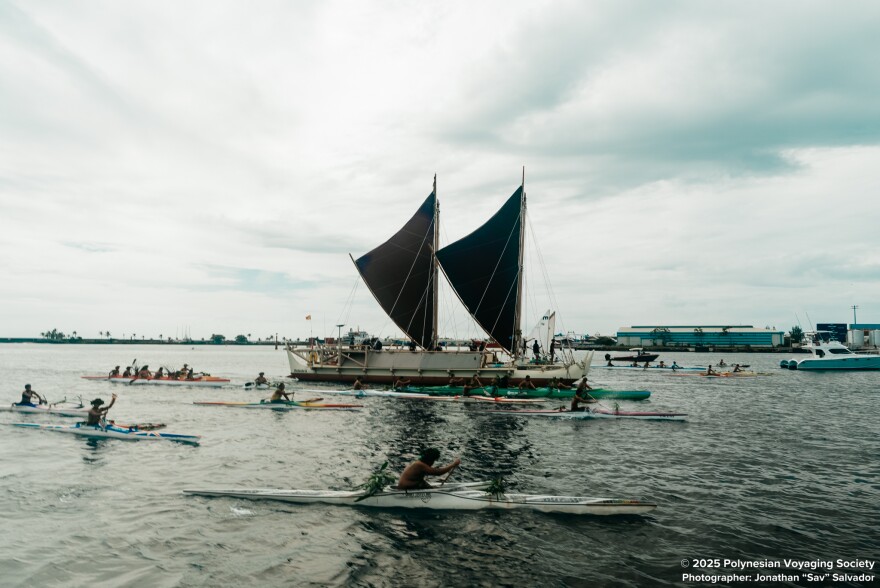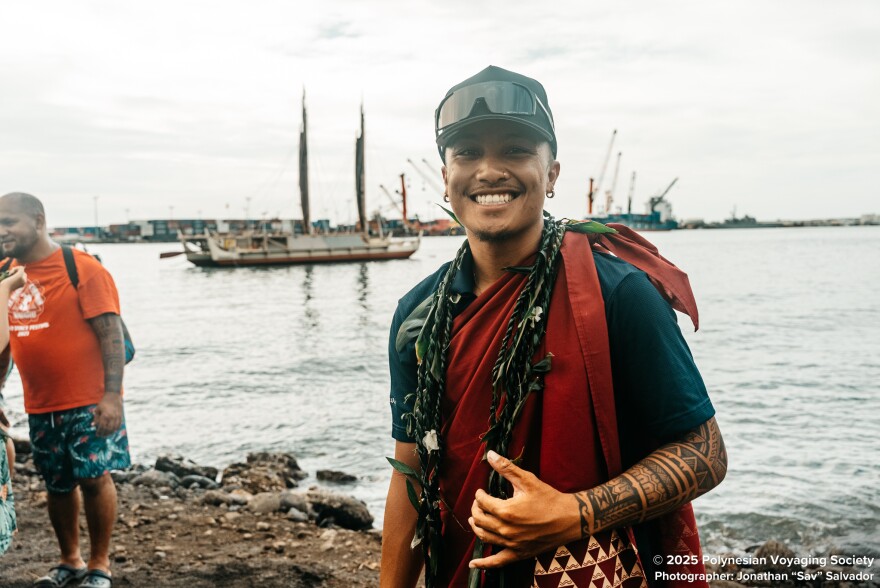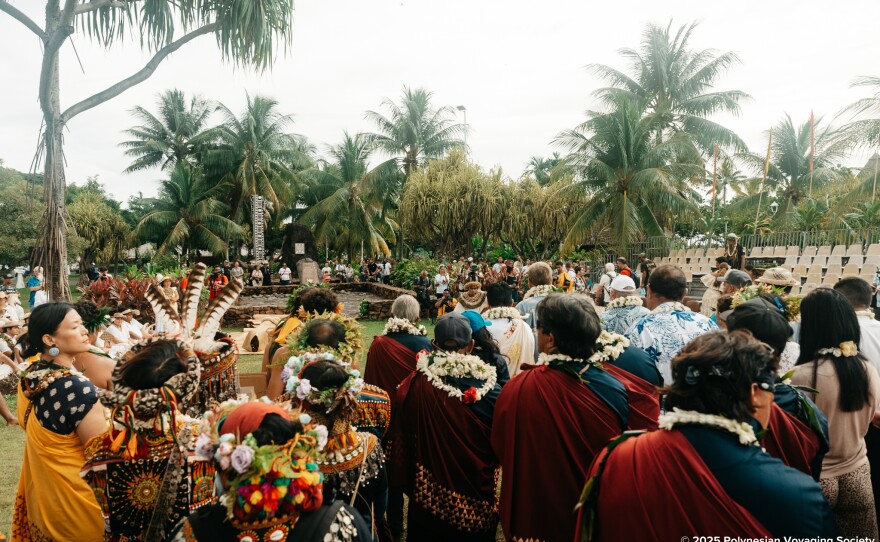When Jonathan “Sav” Salvador received the call that he would be joining Hōkūleʻa's Moananuiākea voyage, he said it felt like his heart dropped to the floor.
“I was doubting myself,” he said. “This is not just any other leg. This is Kealaikahiki. This is the big one. I felt like, ‘Do I deserve this?’ There are so many awesome people that sacrifice so much to be in a position where they can be in this crew.”
The 26-year-old eventually got out of his head and applied what he had learned from his previous smaller voyages last year. He sailed from Sand Island to the Shinnyo Lantern Floating Hawai‘i in Ala Moana, and from Sand Island to Kualoha in Kāneʻohe Bay during the Festival of Pacific Arts and Culture.
Salvador knew he wanted to embark on this voyage to Tahiti.
Salvador, who is Filipino and Chamorro, grew up around the camera. He picked it up as a hobby and creative outlet to capture memories for others.

He graduated from the University of Hawai‘i during the COVID-19 pandemic. He wanted to focus on promoting sustainability and Indigenous conservation.
Before joining the nonprofit Polynesian Voyaging Society, he worked at ESPN Honolulu.
Salvador has always known about Hōkūleʻa through his studies at UH. He saw the advertisement for a media specialist position at PVS and took a shot by submitting his application two days before the portal closed.
He's now been at PVS for nearly two years. He said it was a full circle moment once he stepped onto Hōkūleʻa for the first time.
“To be able to feel her under your feet as you step on deck, it's a very surreal thing,” he said. "You feel the mana of all the ancestors and all the hands that put so much time, blood, sweat, and energy into it.”
Hōkūleʻa and the safety vessel Hikianalia have embarked on a three-year journey across the Pacific to connect with ancestral roots of wayfinding and other Pacific Islanders who share cultural ties.
It's been 50 days since the canoes left Hilo to French Polynesia, or Māʻohi Nui. Crew members are currently in Tahiti's capital, Papeʻetē, after traveling to Mataiea and Moʻoreʻa.
Salvador prepped by packing his Sony A7S III with three camera lenses, in addition to his shotgun microphone to capture video and sound of the voyage.
He said he looks for just about anything to snap a picture of, like emotional moments and cultural interactions.
But being on the voyage isn't just taking pictures. Salvador said he's participating in crew member duties, such as helping steer the vessel.
The first island the crew spotted before arriving in Taputapuatea was Rangiroa. The crew thought it was a shadowy cast, but as they sailed closer, Salvador said the scenery turned green, and then he began to see golden rays emanating from the horizon.
Salvador quickly grabbed his camera to start documenting the crew's reaction to spotting land for the first time.
“You want to respect people's boundaries, especially if they’re taking it in,” he said. "Some people sat on top of the hale. Some people were crying because it was tough. It was tiring. A lot of people worked so hard, and it was amazing to see people taking it in.”

One of Salvador’s favorite photos from his trip was of the Papeʻetē arrival — where smaller wa’a were sailing alongside Hōkūleʻa.
“Our Tahiti cousins are so friendly and filled with aloha,” he said. “It’s just another aspect of capturing another aspect of how special these places we’re visiting are, because you’re seeing family.”
It’s been about a month since leaving Hilo that Salvador has been on the voyage before returning home.
Salvador said he’s looking forward to future voyages and is excited to embark on a trip to Micronesia.
He said one of the challenges of being on a deep-sea voyage is being away from his family. But he said he has a responsibility to document historical moments on the Polynesian voyaging canoe.
“That kuleana you hold,” he said, “some might think it's so simple, but it's really important. You are capturing memories. You're capturing connections."
Congress recently voted to rescind federal funding for public media stations across the country, including HPR. Now we turn to you to help keep us strong.











